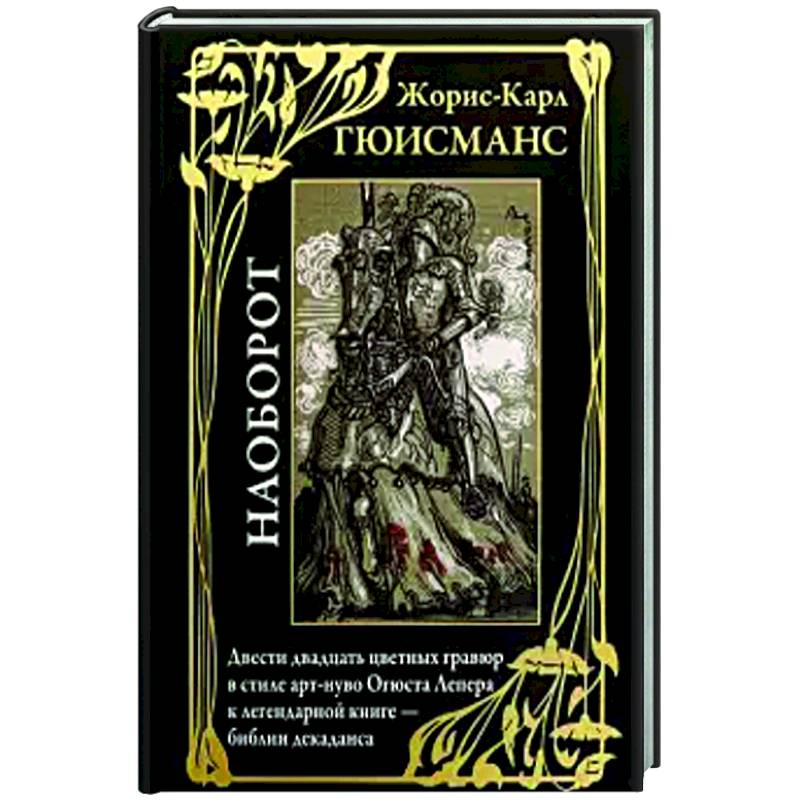On the contrary, BML
Please sign in so that we can notify you about a reply
The famous novel of the French writer Zhoris-Carla Guissmans “on the contrary” in the translation of M. A. Golovkin is rightly considered the manifesto of the European decadence of the late 19th century. In this edition, two hundred and twenty color illustrations of the outstanding French engraver Auguste-Louis Leper decorate it. The book precedes the book for the first time in Russian the preface, written by Huisans twenty years after the publication of this novel, which became a swivel milestone in his literary work. The novel “On the contrary” of Zhoris-Carla Guismans, written in 1884, became not only a turning milestone in the literary work of this French writer. This work embodied the characteristic moods of the late 19th century and became a kind of decadence Bible. The philosopher N. A. Berdyaev considered Guismans a man sophisticated to flour, a real martyr of decline and the largest and most serious writer of France, who created at the turn of the 19th and 20th centuries. The GUISMANS served as an official of the Ministry of the Interior for many years, and the literature was for him some outlet, allowing him to break into the vastness of free creativity and to run away from the vulgarity and ugliness of the bourgeois France in which he lived. His soul reached for the high and beautiful, he was fond of the poetry of Baudler and Verlaine, the romanticism of the Middle Ages, while his reality was only aversion in him. Nevertheless, at the beginning of his literary activity, Guismans diligently depicted this reality. He entered the circle of the so -called Median group of writers, united around Emil Zola, who was a adherent of naturalism in literature. However, soon Guissmans began to feel that the realistic description of the vices of the modern society has exhausted itself. He acutely felt the need for a breakthrough from the framework imposed on him by the Sola school. As a result, the novel “On the contrary” was born, which made a lot of noise in the literary circles of France at the end of the 19th century. It seemed that no one wrote so to Huisans. His refined refined naturalism transformed in this novel into pure decadence. “On the contrary” was called an ultra -man and even satanic work, although for the author himself it became the beginning of movement towards faith and returning to the bosom of the Catholic religion, because the desire for high and the desire to break away from the mercantile fuss of life always lead a person to the sky. In fact, everything that Guism wrote is only the history of his soul, torment, doubt and spiritual searches. All the heroes of the writer are he himself in different periods of his life. The novel “On the contrary” in this edition is decorated with two hundred and twenty color illustrations of the outstanding French engraver of Auguste-Louis Leper. The future master was born in 1849 in Paris and began to engage in engraving at the age of thirteen, creating many magnificent illustrations in which not only the confident hand of the master, but also the influence of Japanese art of Ukiyo-e, as well as plastic art nuvo. The work of the leper is distinguished by a restrained color scheme, but it only emphasizes their sophisticated aesthetics, which is the best suited to the spirit of the novel “On the contrary”. By the end of his life, Leper became one of the greatest masters of engraving, his works are stored in many museums of France and beyond
Author:
Author:GUISMANS ZHORIS KARL
Cover:
Cover:Hard
Category:
- Category:Children's Book
- Category:Fiction
- Category:Modern Literature
- Category:Agriculture
- Category:Poetry & Literature
Publication language:
Publication Language:Russian
Paper:
Paper:Offset
Series:
Series: Library of World Literature
ISBN:
ISBN:978-5-9603-0664-5
No reviews found
